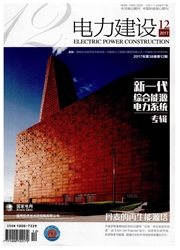

 中文摘要:
中文摘要:
为提高区域电网自动发电控制(automatic generation control,AGC)的控制性能指标,利用接入电网的大规模电动汽车参与AGC。在满足车主充电需求的前提下,建立了电动汽车的实时上下调节容量评估模型。在此基础上,构建了电动汽车集群与传统水电、火电机组的AGC功率分层分配框架。为满足上层不同类型机组的快速经济分配,提出了一种深度交互教学(deep interactive teaching-learning,DITL)优化算法进行求解,该算法在标准教学优化算法的基础上,将单个班级扩展到多个班级,并采用小世界交互网络构建不同教师/学生之间的交互网络,从而提升算法的全局搜索及局部搜索能力。在电动汽车集群内部,则根据调节成本系数实现第二层不同局部控制中心的AGC功率分配,然后根据充电时间裕度排序实现不同电动汽车的底层AGC功率分配。海南电网仿真算例表明:该文所提的上层分配框架可有效实现电动汽车与传统水火电机组的协调,DITL算法能有效提升AGC的动态控制性能,降低系统的调节成本。
 英文摘要:
英文摘要:
To improve the control standard performance of automatic generation control( AGC) in an area power grid,the massive plug-in electric vehicles are employed for participating in AGC. The evaluation model of real-time up/down regulation capacity of electric vehicle is constructed by satisfying the charging demand of the owners. Based on this,a multilayer framework of generation command dispatch of AGC is presented for a coordinated regulation between a cluster of electric vehicles and conventional hydro,thermal units. In order to meet the rapid economic allocation of different types of upper units,this paper proposes a novel optimization algorithm of deep interactive teaching-learning( DITL),in which a single class of the standard teaching-learning-based optimization is extended to multiple classes,while the small world networks is adopted for constructing the interactive networks among different teachers/students,thus the global search ability and local search ability can be enhanced. In the cluster of electric vehicles,the second-layer generation command dispatch of AGC is executed based on the regulation cost coefficients of different local control center,then the bottom-layer generation command dispatch of AGC is achieved according to the charging time margin of each electric vehicle. The simulations of Hainan power grid indicate that the coordinated regulation between a cluster of electric vehicles and conventional hydro and thermal units can be effectively achieved by the proposed upper generation command dispatch,and DITL algorithm can efficiently improve the dynamic control performance of AGC and reduce the regulation cost of the system.
 同期刊论文项目
同期刊论文项目
 同项目期刊论文
同项目期刊论文
 期刊信息
期刊信息
